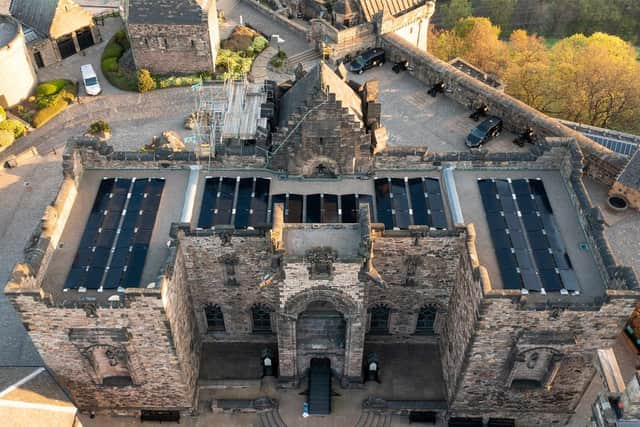It is more economical to heat or cool a person than a whole building
Playing its role as part of the worldwide conversation on the future design of buildings, Edinburgh is hosting to a major conference featuring a string of experts who may just hold the answers.
While the UK, France and other parts of Europe sweltered as the mercury soared, elsewhere in the world such temperatures are very much the norm and it is the buildings constructed there that make life bearable in the conditions.
Advertisement
Hide AdAdvertisement
Hide AdIn her blog about the event, CATE 22 chair, Kate Roaf, said the conference is aimed at an audience which has a key role to play in current and future buildings, their heating, carbon output and overall environmental impact.


Ms Roaf said: “One major theme is the importance of recognising that it is easier to reduce the temperature of a person than a building, which is why air movement and the correct construction materials and methods are vital.
“It is more economical to heat or cool a person than a whole building. The move to make everyone install whole building heating and cooling systems such as heat pumps or hydrogen boilers is fine for the rich, but goes right over the head of the fuel poor who cannot afford to run such systems.
“The aim from now on must be to design buildings that need minimal heating or cooling in the first place, and then to allow occupants to use low tech, low energy person-centric solutions for comfort to be used like local fans or heaters. This must come before even considering expensive whole building solutions. A critical feature of such thermally resilient buildings is that they contain a range of different micro-climates – usually warmer facing the sun and cooler facing away from it. Buildings from now on should contain at least one cool and one hot climate refuge.”
Given the negative effect of the most recent heatwave, even in Scotland, CATE 22 will ask how people will adapt to cope amid rising temperatures
How can architects learn to design better for heat - not least the elderly . Again, key people from Arizona, India, Australia, California, Spain, Portugal will attend to tell the audience how they adapt to higher temperatures.
Ms Roaf, who designed the award-winning Oxford Ecohouse, Ms Roaf continued: “We are told by some ‘experts’ that an indoor temperature of 26°C is around the highest temperature that humans can consider comfortable. But what about the billions of people all around the world who have been living happily and comfortably for millennia in temperatures way above that? But feeling is believing, and many of you on 19th July 2022 might have come into spaces from 37°C outdoors into 26°C indoors and thought this is cool.”
If you want to hear more on heatwave planning, the conference on Comfort at the Extremes is being held in Edinburgh on September 5 and 6.
Comments
Want to join the conversation? Please or to comment on this article.